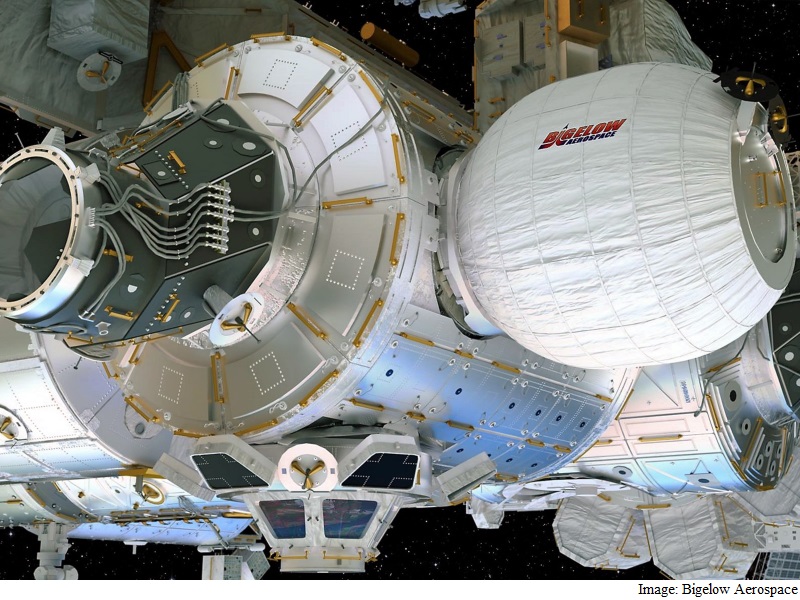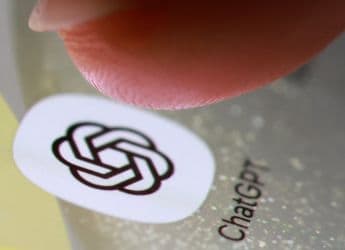- Home
- Science
- Science News
- Beam Installation Set to Get Underway
Beam Installation Set to Get Underway

However, the expansion of the new habitat module would not occur until late May for two years of habitability tests, US space agency Nasa said in a post.
The 1,400 kg Beam is a $17.8 million project that will test the use of an inflatable space habitat in micro-gravity. Beam will be filled with air to expand four and a half times its original volume.
SpaceX's Dragon cargo ship arrived at the International Space Station (ISS) on Sunday and was successfully docked by the orbiting lab's robotic arm.
(Also see: First Expandable Habitat on ISS Set for Installation)
A total of six astronauts are already on-board the ISS along with another US commercial cargo ship called Cygnus that has been attached to the station since March 26.
"Dragon's arrival marks the first time two commercial cargo vehicles have been docked simultaneously at the space station," Nasa had said.
"With the arrival of Dragon, the space station ties the record for most vehicles on station at one time six," said Nasa.
The last time six vehicles were docked to the station was back in the space shuttle era, when Discovery visited in February 2011.
During its two-year test mission, astronauts will enter the module for a few hours several times a year to retrieve sensor data and assess conditions.
Inflatable habitats are designed to take up less room on a rocket, but provide greater volume for living and working in space once expanded, Nasa said.
This test allows investigators to gauge how well the expandable habitat protects itself against solar radiation, space debris and contamination, it said.
Dragon will remain connected to the ISS until May 11, when it will depart for a parachute-assisted splashdown off the coast of California, bringing almost 3,500 pounds (1,600 kgs) of science, hardware and spacewalking tools back to Earth for further study.
Meanwhile, the six-member Expedition 47 crew, which docked safely at the International Space Station (ISS) last month, continued key research that advances Nasa's journey to deep space missions to benefit life on Earth and crews in space.
The crew will be spending five months conducting more than 250 science investigation in fields that benefit all of humanity, such as biology, Earth science, human research, physical sciences and technology development.
They observed skeletal muscle cells with a microscope to help researchers identify gravity sensors that may prevent muscle atrophy in space.
Saliva samples were collected for a Japanese experiment analysing how an astronaut's immune system adapts to long-term space missions.
The crew has already set up software for an experiment recording an astronaut's cognitive performance during stressful conditions in space.
They have also given information about their station habitat providing insights to engineers to help them design spacecraft to meet the needs of future crews.
Get your daily dose of tech news, reviews, and insights, in under 80 characters on Gadgets 360 Turbo. Connect with fellow tech lovers on our Forum. Follow us on X, Facebook, WhatsApp, Threads and Google News for instant updates. Catch all the action on our YouTube channel.
Related Stories
- Samsung Galaxy Unpacked 2025
- ChatGPT
- Redmi Note 14 Pro+
- iPhone 16
- Apple Vision Pro
- Oneplus 12
- OnePlus Nord CE 3 Lite 5G
- iPhone 13
- Xiaomi 14 Pro
- Oppo Find N3
- Tecno Spark Go (2023)
- Realme V30
- Best Phones Under 25000
- Samsung Galaxy S24 Series
- Cryptocurrency
- iQoo 12
- Samsung Galaxy S24 Ultra
- Giottus
- Samsung Galaxy Z Flip 5
- Apple 'Scary Fast'
- Housefull 5
- GoPro Hero 12 Black Review
- Invincible Season 2
- JioGlass
- HD Ready TV
- Laptop Under 50000
- Smartwatch Under 10000
- Latest Mobile Phones
- Compare Phones
- Huawei Nova 15
- Huawei Nova 15 Pro
- Huawei Nova 15 Ultra
- OnePlus 15R
- Realme Narzo 90x 5G
- Realme Narzo 90 5G
- Vivo S50 Pro Mini
- Vivo S50
- Asus ProArt P16
- MacBook Pro 14-inch (M5, 2025)
- Huawei MatePad 11.5 (2026)
- OnePlus Pad Go 2 (5G)
- OnePlus Watch Lite
- Just Corseca Skywatch Pro
- Acerpure Nitro Z Series 100-inch QLED TV
- Samsung 43 Inch LED Ultra HD (4K) Smart TV (UA43UE81AFULXL)
- Asus ROG Ally
- Nintendo Switch Lite
- Haier 1.6 Ton 5 Star Inverter Split AC (HSU19G-MZAID5BN-INV)
- Haier 1.6 Ton 5 Star Inverter Split AC (HSU19G-MZAIM5BN-INV)

















